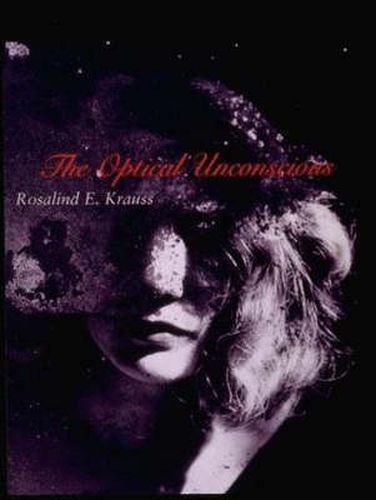The Optical Unconscious
Rosalind E. Krauss

The Optical Unconscious
Rosalind E. Krauss
The Optical Unconscious is a pointed protest against the official story of modernism and against the critical tradition that attempted to define modern art according to certain sacred commandments and self-fulfilling truths. The account of modernism presented here challenges the vaunted principle of vision itself. And it is a very different story than we have ever read, not only because its insurgent plot and characters rise from below the calm surface of the known and law-like field of modernist painting, but because the voice is unlike anything we have heard before. Just as the artists of the optical unconscious assaulted the idea of autonomy and visual mastery, Rosalind Krauss abandons the historian’s voice of objective detachment and forges a new style of writing in this book: art history that insinuates diary and art theory, and that has the gait and tone of fiction.The Optical Unconscious will be deeply vexing to modernism’s standard-bearers, and to readers who have accepted the foundational principles on which their aesthetic is based. Krauss also gives us the story that Alfred Barr, Meyer Shapiro, and Clement Greenberg repressed, the story of a small, disparate group of artists who defied modernism’s most cherished self-descriptions, giving rise to an unruly, disruptive force that persistently haunted the field of modernism from the 1920s to the 1950s and continues to disrupt it today.In order to understand why modernism had to repress the optical unconscious, Krauss eavesdrops on Roger Fry in the salons of Bloomsbury, and spies on the toddler John Ruskin as he amuses himself with the patterns of a rug; we find her in the living room of Clement Greenberg as he complains about smart Jewish girls with their typewriters in the 1960s, and in colloquy with Michael Fried about Frank Stella’s love of baseball. Along the way, there are also narrative encounters with Freud, Jacques Lacan, Georges Bataille, Roger Caillois, Gilles Deleuze, and Jean-Francois Lyotard.To embody this optical unconscious, Krauss turns to the pages of Max Ernst’s collage novels, to Marcel Duchamp’s hypnotic Rotoreliefs, to Eva Hesse’s luminous sculptures, and to Cy Twombly’s, Andy Warhol’s, and Robert Morris’s scandalous decoding of Jackson Pollock’s drip pictures as Anti-Form.
These artists introduced a new set of values into the field of twentieth-century art, offering ready-made images of obsessional fantasy in place of modernism’s intentionality and unexamined compulsions.Rosalind Krauss is Professor of Art History at Columbia University and an editor of the journal October.
This item is not currently in-stock. It can be ordered online and is expected to ship in 7-14 days
Our stock data is updated periodically, and availability may change throughout the day for in-demand items. Please call the relevant shop for the most current stock information. Prices are subject to change without notice.
Sign in or become a Readings Member to add this title to a wishlist.

